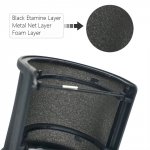Hi all!
I saw this forum and I hope that you guys could help me with this ...
I use a AT2020 and Scarlett 2i2 to stream on twitch, I been reading a lot about EQ, Compressors de-essers and nothing is working for me, there is still some explosions on sibilance that almost hurts your ears...
What can you recommend me to try? I am open to hear if a new mic (and which one) would be needed to solve this problem
Thanks for your help guys and sorry for my broken english, saludos from Barcelona.
( I will link a vÃ*deo of one of the streams so you can see what I am talking about, some essing sounds are not bad but other ones are just too much: twitch.tv/videos/546919432 )
I saw this forum and I hope that you guys could help me with this ...
I use a AT2020 and Scarlett 2i2 to stream on twitch, I been reading a lot about EQ, Compressors de-essers and nothing is working for me, there is still some explosions on sibilance that almost hurts your ears...
What can you recommend me to try? I am open to hear if a new mic (and which one) would be needed to solve this problem

Thanks for your help guys and sorry for my broken english, saludos from Barcelona.
( I will link a vÃ*deo of one of the streams so you can see what I am talking about, some essing sounds are not bad but other ones are just too much: twitch.tv/videos/546919432 )

